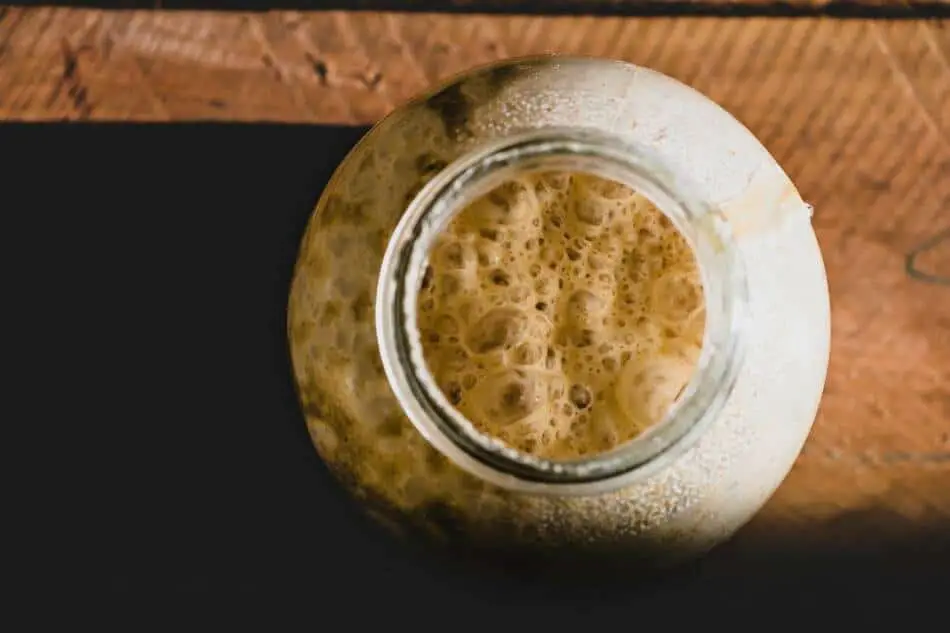The magic of sourdough bread arises from the fermentation process, where simple ingredients like flour and water transform into a lively ecosystem of bacteria and yeast. The byproducts of this microbial activity lead to the unique taste and texture of sourdough bread. One of the most evident signs of this fermentation is the aroma of your sourdough starter. If you’ve detected a particularly strong acidic smell from your starter, you’re not alone. Let’s explore why this happens and what it signifies.
An overwhelming acidic smell in a sourdough starter indicates high acid production, often due to infrequent feedings or warm temperatures. While it can enhance bread’s tangy flavor, excessive acidity may weaken gluten structure, affecting bread texture. Regular feedings and keeping temperatures between 78°F (25°C) to 82°F (28°C) can mitigate this issue.
1. The Science Behind the Smell
The acidic smell emanating from a sourdough starter isn’t just a byproduct—it’s a testament to the active life within. As yeast and lactic acid bacteria metabolize the carbohydrates present in the flour, they release specific compounds.
a. Role of Yeasts
These single-celled fungi mainly break down sugars to produce ethanol and carbon dioxide. While the carbon dioxide contributes to the rise in the dough, ethanol is part of what gives the starter its characteristic scent.
b. Contribution of Lactic Acid Bacteria
These bacteria produce, predominantly, lactic acid. However, depending on the strain and environment, they can also produce acetic acid. Both of these acids lend to the starter’s sour notes, with acetic acid giving a sharper, vinegary undertone.
The balance between these microbial products not only influences the smell of the starter but also the eventual taste of the bread. The tang and depth of flavor in sourdough largely hinge on these microbial activities.
2. Is a Strong Acidic Smell a Problem?
The strength of the acidic aroma is, in many ways, subjective. Some bakers prefers a pungent starter, valuing the robust sourness it can bring to their loaves. Others might prefer a subtler sour note.
While an acidic smell alone doesn’t denote an issue, accompanying signs can indicate problems. Discolorations, especially shades of pink, orange, or any mold presence, can signal harmful bacterial or fungal growth. Similarly, an unusually rancid or foul odor might indicate contamination.
A starter’s aroma often hints at the taste it’ll lend to bread. If you find your bread too sour, or not sour enough, consider it a cue. Adjusting feeding routines, temperatures, and hydration can all influence the balance of acids and, by extension, the bread’s flavor profile.
3. Why Your Starter Might Smell Strongly Acidic
a. Infrequent Feedings
Every time a sourdough starter is left unfed, the populations of yeast and bacteria continue consuming available nutrients. Depleted resources result in an increased production of organic acids, enhancing the sour aroma. Regular feedings are crucial to ensure the microbial communities have a consistent food supply, preventing this intense acidic buildup.
b. Temperature’s Role
Ambient temperature directly influences fermentation rates. When a sourdough starter is kept in a warmer environment over 82°F (28°C), the microorganisms become more active, fermenting at an accelerated rate. Without increased feeding frequency, acid production can ramp up, intensifying the acidic smell.
c. Characteristics of a Mature Starter

Just as fine wine or cheese develops character over time, a sourdough starter’s aroma evolves. As it matures, especially if left without fresh feedings, the accumulated acids result in a pronounced sourness. This characteristic is typical for older starters but can be mitigated with regular feedings.
d. Microbial Composition and Its Impact
Different strains of bacteria produce various organic acids. Lactic acid bacteria, as the name implies, produce lactic acid, which has a milder, yogurt-like tang. In contrast, acetic acid-producing bacteria yield a sharper, vinegar-like aroma. The proportion of these bacteria determines the starter’s overall scent profile.
4. Addressing the Acidic Smell
a. Consistent and Timely Feedings
One of the most effective ways to control the acidity level in your starter is by maintaining a consistent feeding schedule. By doing so, you ensure that the yeasts and bacteria have a steady supply of food, reducing excessive acid production.
By feeding regularly, you also replace the acids in the culture with fresh flour and water, diluting its sourness.
b. Increase Feeding Ratio
If your starter’s scent is overwhelmingly acidic, it might be beneficial to discard a larger portion before the next feeding. By doing this, you’re effectively diluting the concentration of acids, allowing the freshly added flour and water to mellow out the aroma over time.
If you are using a 1:1:1 feeding ratio, try to increase to a 1:2:2 or even a 1:3:3 feeding ratio of starter:fresh flour:fresh water, by weight.
c. Maintain at Optimal Temperature

The temperature at which you keep your starter plays a pivotal role in its activity and resultant aroma. A stable environment, ideally between 78°F (25°C) to 82°F (28°C), promotes balanced fermentation. If you’re battling the heat or inconsistent temperatures, think about adjusting your feeding schedule or moving your starter to a location less prone to temperature fluctuations. This might mean a cooler spot in your kitchen or even resorting to refrigerator storage between feedings.
Conclusion
The smell of your sourdough starter offers a fascinating glimpse into the microbial world within. A strong acidic aroma is a testament to the active fermentation and the dance of yeast and bacteria. By understanding and tweaking the factors that influence this smell, you can harness the power of fermentation to bake bread that’s just to your taste.


